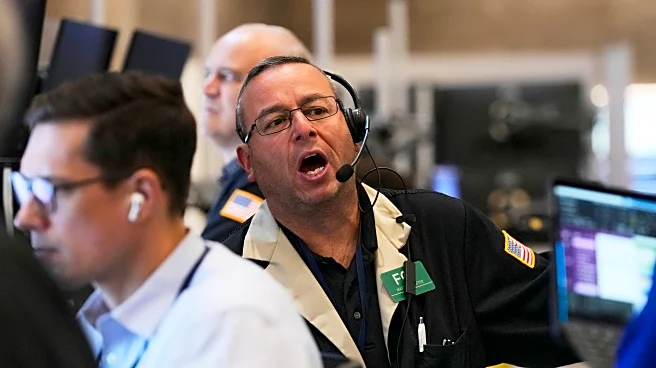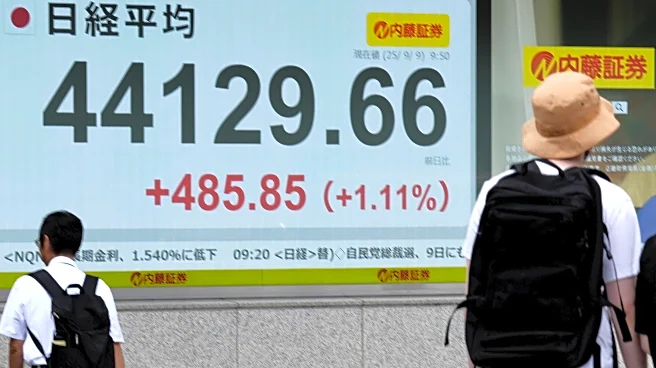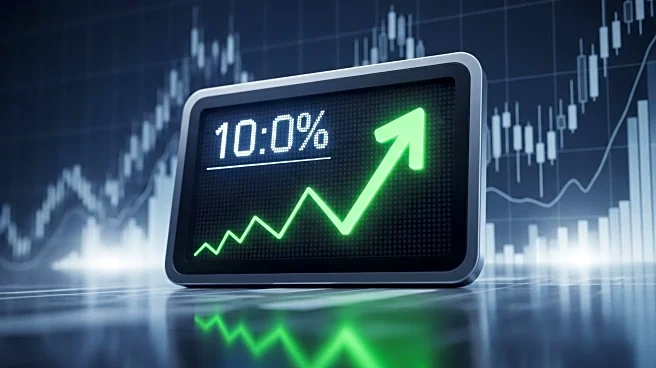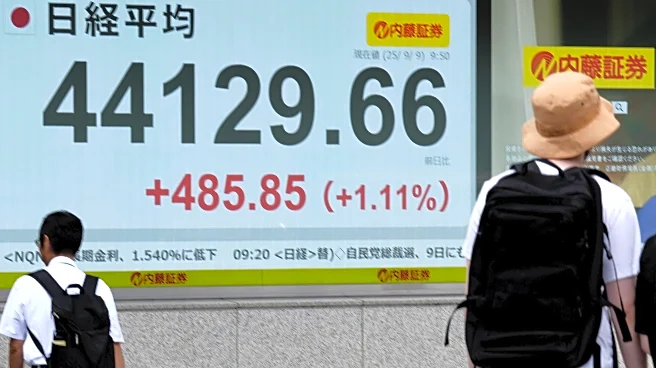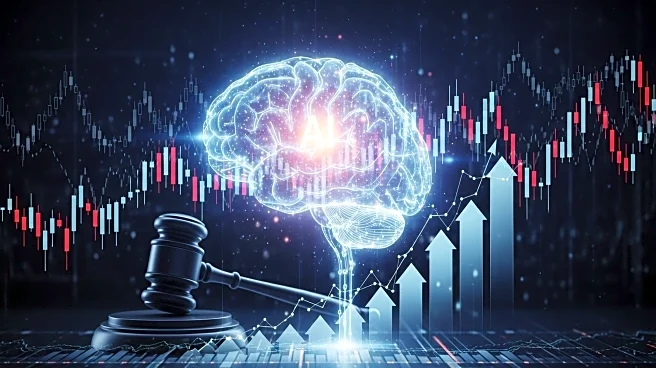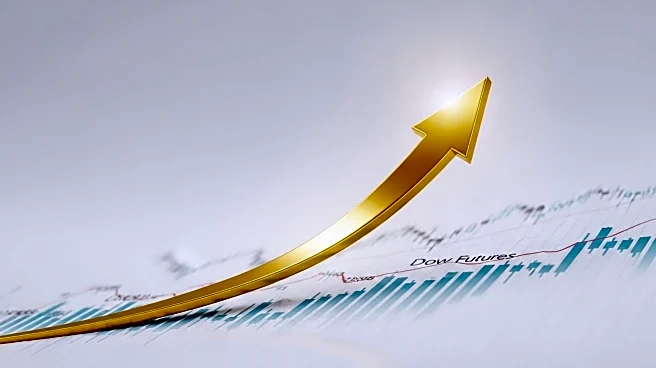What's Happening?
Goldman Sachs strategist Christian Mueller-Glissmann has highlighted three significant risks to the market despite recent highs in the Nasdaq Composite and S&P 500. These risks include a large negative growth shock affecting risky assets, a substantial rate shock impacting long-duration assets, and a deepening Dollar bear market. The U.S. economy showed signs of strain, with the Bureau of Labor Statistics reporting only 22,000 jobs added in August, far below expectations. The Federal Reserve's potential easing of monetary policy could increase inflation, affecting Treasury yields. Goldman Sachs remains bullish on gold, predicting it could reach $4,000 by mid-2026, while maintaining a neutral stance on equities.
Why It's Important?
The concerns raised by Goldman Sachs are significant for investors and the broader U.S. economy. A negative growth shock could lead to decreased investor confidence and impact stock market performance. Rate shocks could affect long-duration assets, including bonds, leading to higher yields and increased borrowing costs. The Dollar's weakening could influence international trade and investment. Goldman's bullish stance on gold suggests a hedge against potential stagflation, indicating a shift in investment strategies. These developments could affect financial markets, economic policy, and investor behavior.
What's Next?
Investors and policymakers will closely monitor economic indicators and Federal Reserve actions. The potential easing of monetary policy could lead to inflationary pressures, impacting Treasury yields and investment strategies. Goldman's prediction for gold prices suggests a continued focus on safe-haven assets amid economic uncertainties. Stakeholders may adjust portfolios to mitigate risks associated with growth and rate shocks. The evolving economic landscape will require strategic planning and adaptation to maintain stability and growth.



